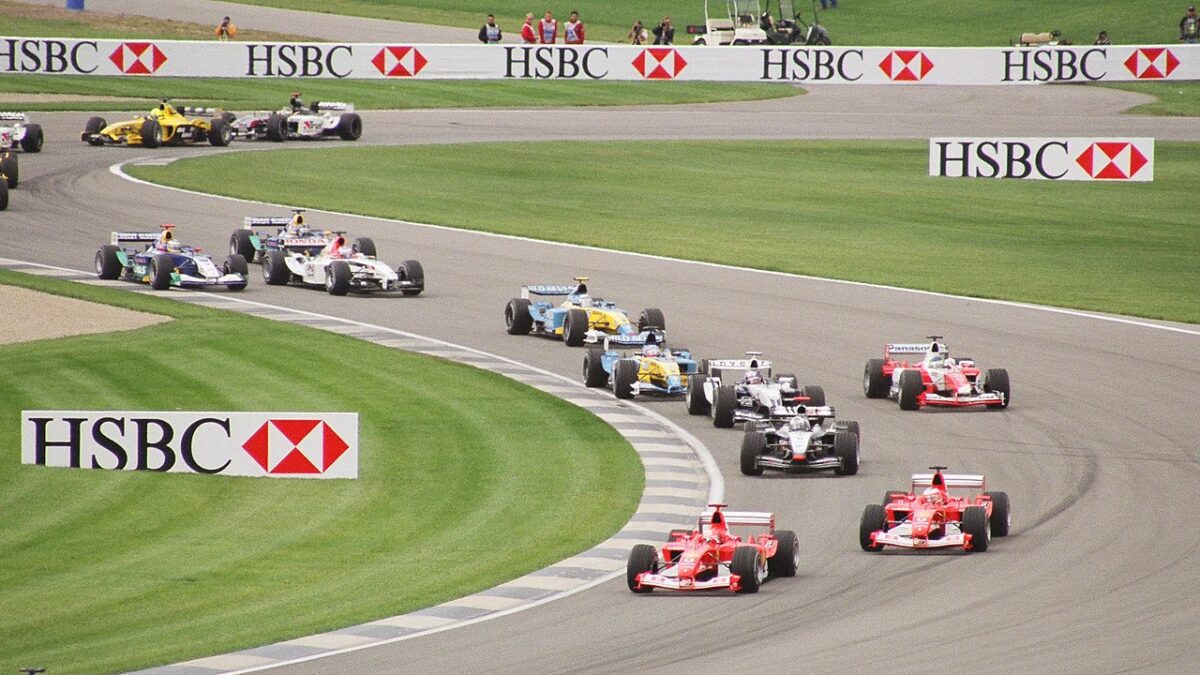
After nearly nine months and thousands of miles, it came down to a single lap — 90 seconds to win a championship.
The thrilling — and controversial — ending to Sunday’s Abu Dhabi Grand Prix marked the end of a season-long rumble between Britain’s Lewis Hamilton and Dutch driver Max Verstappen. In the end, Verstappen came out on top in the race, and for the season.
But the 22 rounds of this hard-fought season, which saw the two drivers swapping places like heavyweight fighters trading punches, could also be considered the beginning of Americans’ interest in Formula One racing. On the heels of other positive developments, the momentum from this season could finally allow the sport to break through into the American mainstream.
Controversial Calls
The Abu Dhabi race started and ended in controversy. On the opening lap, Hamilton passed Verstappen going into the first corner, but Verstappen came back later in the lap with a lunge to the inside. Hamilton maintained the lead, but had to venture off-track to do so. While Hamilton gave back some of the ground he gained by going off-track, he did not give up the lead, arousing the ire of Verstappen and his Red Bull team.
For much of the race, it seemed like the early incident wouldn’t matter. Hamilton’s Mercedes easily outclassed the Red Bull, maintaining a lead of several seconds throughout the race. With about a dozen laps to go, Red Bull team principal Christian Horner told ITV broadcasters that Verstappen needed a miracle from the “racing gods” to pull out a victory. A few minutes later, they got it.
With only half a dozen laps remaining, a crash involving Nicholas Latifi required a safety car caution period to clean up the wreck. The cars bunched up on track, and Verstappen (but not Hamilton) ducked into the pits for fresh tires.
The controversy came with two laps to go, when race director Michael Masi not only announced the race would restart with one lap remaining, he allowed the lapped cars separating Hamilton and Verstappen to pass the safety car. The move allowed the race, and the championship, to finish under racing conditions, rather than behind a safety car. But some said it violated the sport’s regulations, and Mercedes (unsuccessfully) protested the race on that basis.
The restart decision effectively decided the outcome. With Verstappen pulled up to the rear of Hamilton’s car, and on much fresher tires, the Dutchman passed the Brit for the win — and the championship.
Battle of Titans
Although decided by the narrowest of margins in Abu Dhabi, the battle between Hamilton and Verstappen ran the whole length of the 2021 season. With the 37-year-old Hamilton looking for his record-breaking eighth championship, the 24-year-old Verstappen played the role of upstart, looking to break the hammerlock that Hamilton and his Mercedes team have had on the sport for nearly a decade.
Each one pushed the other to new heights of performance. Frequently, the two would run out gaps of 30 seconds or more against the rest of the field. And though Hamilton and Verstappen headed into Sunday’s race tied in points, their nearest competitor was more than four races behind — that is, if Valtteri Bottas won four races in a row, and Hamilton and Verstappen each scored no points at all, Bottas still wouldn’t have taken the championship lead. That’s how dominant the two drivers have been.
They have also collided with each other, literally and figuratively. Verstappen crashed out of the British Grand Prix, they wrecked each other at the Italian Grand Prix, and they had other controversial battles, including in Brazil and last week in Saudi Arabia.
Despite the intensity of their dueling, both have shown respect for the other. Although stunned at the turn of events that led to him losing the championship on the last lap in Abu Dhabi, Hamilton congratulated Verstappen and his team after the race. The gracious gesture, even after a heart-wrenching loss, showed tremendous class — the mark of a champion.
Upswing in the States
The Hamilton-Verstappen battle comes at a fortuitous time for Formula One. Like soccer, the sport boasts immense popularity worldwide, but precious little in the United States. For instance, to the extent anyone in the States thought about Red Bull boss Christian Horner, it was probably as the husband of Geri Halliwell (a.k.a. Ginger Spice) rather than as an important figure in his own right. Little by little, however, that tide appears to be changing.
Ratings for Formula One races in the United States have increased of late, which also coincides with the Netflix series “Drive to Survive” profiling the sport. (Television still presents a logistical challenge, however, as global time zones mean many F1 races occur early on Sunday mornings in the States.) The sport will add a second U.S. race in Miami next spring, to go with the annual fall date at Circuit of the Americas outside Austin. The racing paddock has also buzzed with potential rumors of a third American race, this one based in Las Vegas, in years to come.
Formula One wants to make an effort to break into the American market. The controversial decisions by F1 officials the past few races have angered fans, with stock car announcer Rick Allen tweeting that fans would “lose their s—” if NASCAR had acted the way Formula One did on Sunday. But the controversial calls have also kept fans buzzing, both during the races and afterward.
Most importantly, the on-track battles during the course of the season between Hamilton and Verstappen proved as thrilling as this fan can recall in any form of auto racing. Each man elevated the other’s game — and in doing so, elevated Formula One racing along with it.









